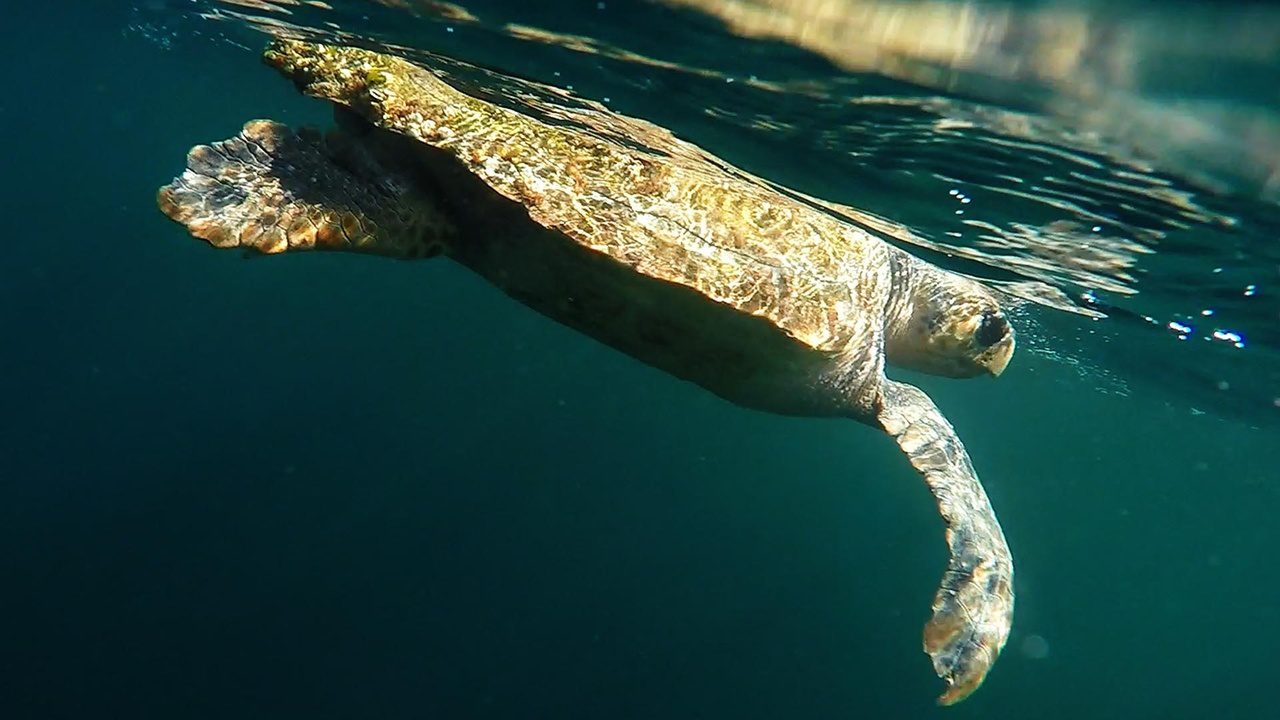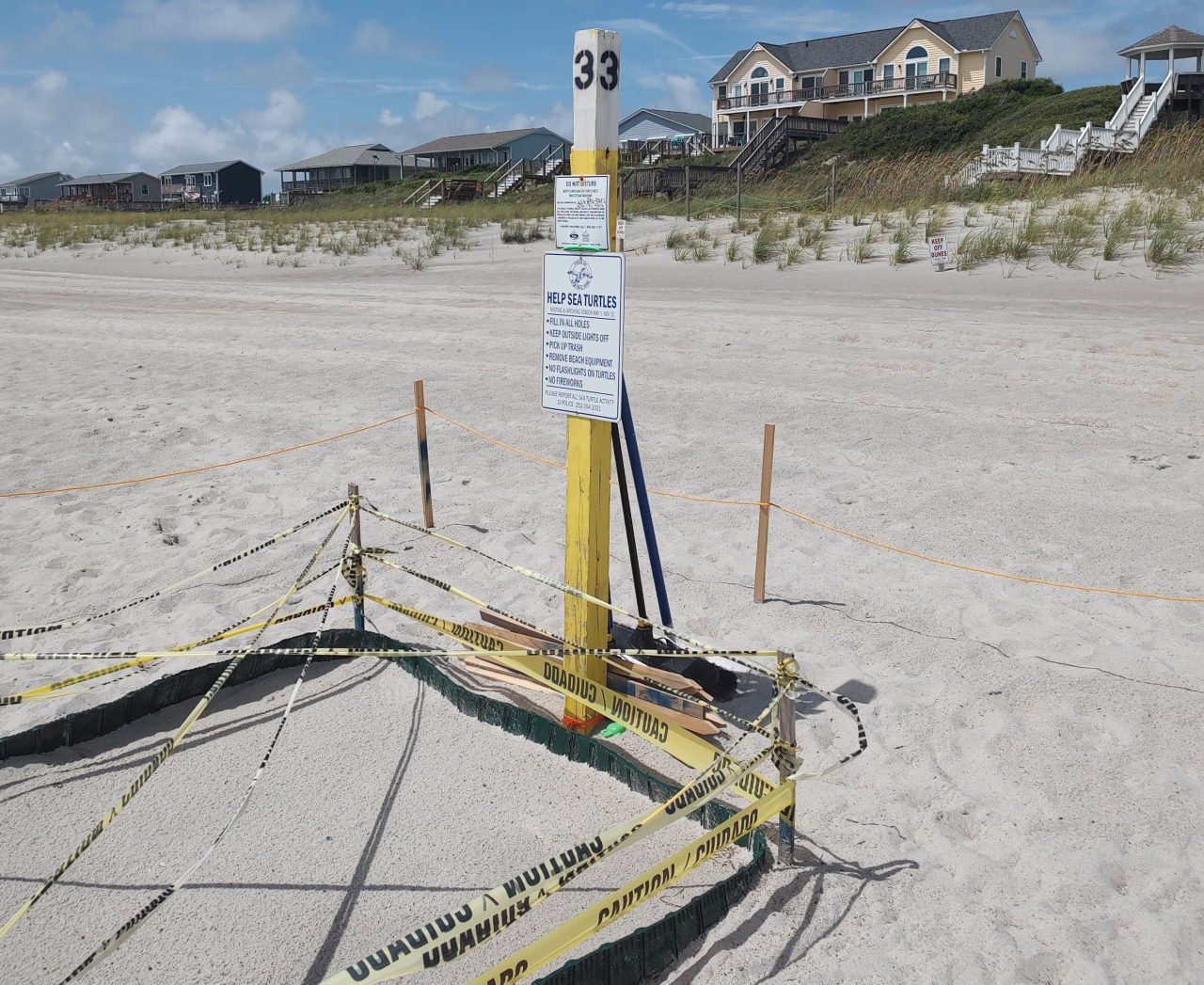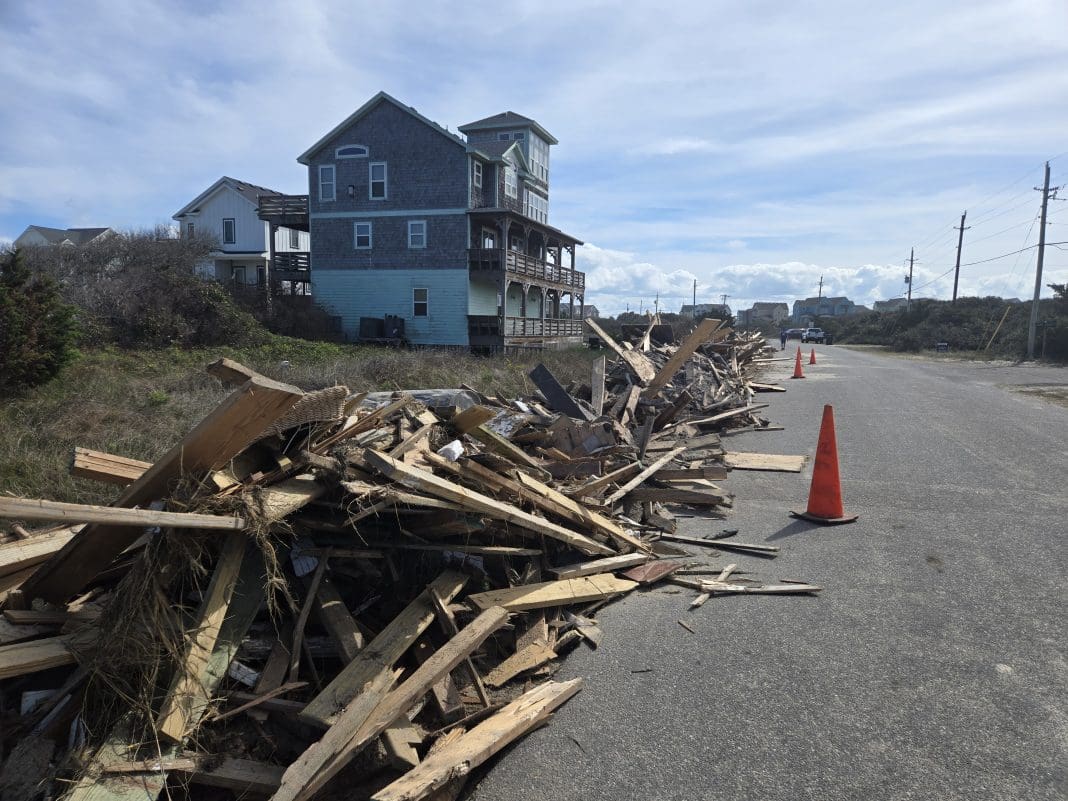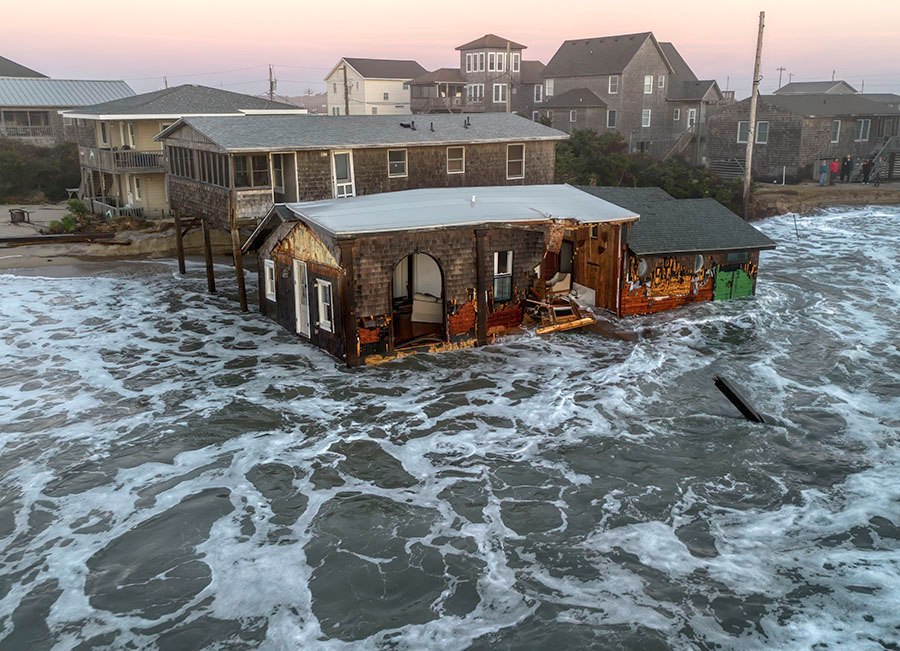
During any given summer on North Carolina beaches, volunteers comb the shores for evidence of freshly laid sea turtle nests.
As the height of tourism season goes on, beachgoers are likely to see brightly colored ribbon tied between stakes used to cordon off carefully buried nests.
Supporter Spotlight
Few are likely to witness darling hatchlings emerge to the sandy surface, flipper paddle their way to the waves and disappear in the ocean, taking with them secrets researchers have yet to unlock.
Take, for example, endangered loggerhead sea turtles. We don’t know their average life span, the typical number of nests a female will lay over her lifetime, or how many years she will nest once she reaches maturity.
Nesting females usually lay their eggs under the cover of night, leaving nest scouters, at best, a trail of flipper prints between the stretch of beach that expands and retracts with the tide.
This elusive nighttime nesting ritual usually means volunteers are not out to see females on the beach, much less tag them. Even if a turtle is tagged, that tag may come off.
All of this makes it particularly difficult for researchers to get a good idea of how the loggerhead population is faring in the wild.
Supporter Spotlight
For decades now, researchers have counted nests as a way to measure female sea turtle populations.
This is pretty much the worldwide, standard practice, one that leaves more questions than answers, including what’s been happening on beaches from North Carolina to Georgia where loggerhead nest counts are up.
“One of the challenges is when there’s an increase in nests, does that mean that there’s an increase of females or maybe they’ve just had a super foraging year and they’ve got tons of energy and they’re able to lay more nests,” said Matthew Godfrey, sea turtle biologist with the North Carolina Wildlife Resources Commission.
Now researchers believe they have an answer.
“We confirmed that there’s a pretty strong correlation between the nest counts and the actual female population size,” said Brian Shamblin, an associate research scientist with the University of Georgia’s Warnell School of Forestry and Natural Resources.
Shamblin heads a multistate study that uses genetic tagging to track female loggerheads in the northern recovery unit, an area that spans from the southernmost beach in Georgia up the East Coast to the North Carolina-Virginia state line.
Loggerheads in the northern recovery unit are genetically distinct from those that nest in Florida and other areas of the world.
To better understand how loggerheads in this unit are doing in the wild, the North Carolina Wildlife Resources Commission in 2010 partnered with the South Carolina and Georgia departments of natural resources and the University of Georgia for the Northern Recovery Unit Loggerhead DNA Project.
That partnership was formed after Shamblin in 2006 discovered he could extract DNA from the shells of nonviable sea turtle eggs and use that DNA fingerprint to identify a mother with her nest.
“Because we know each female for each nest we’re able to look at some of the patterns and it does look like the majority of females prefer to stay say within 25 miles or so (between nests) so usually the same island or maybe two islands adjacent to each other,” Godfrey said. “But there are other females that are less faithful and they tend to wander more and they tend to move 200 to 300 miles between nests.”
For example, one loggerhead laid a nest north of Nags Head, swam down to northern Florida to nest there, then headed back up north to Cape Lookout to lay another nest in one season.
“We don’t know why some animals take these extended periods further away,” Godfrey said. “Females don’t tend to nest every year. They nest every second or third or fourth year so you need a long-term dataset to uncover these behavioral trends.”
Through this study, researchers have found that some turtles take as many as seven to nine years off between nesting seasons.
“Which again, is really interesting and we’re not quite sure why,” Godfrey said. “We don’t know if they’re truly taking off that time or maybe those are the ones that went really far south outside of our study area and maybe they’re nesting in southern Florida and that’s why we don’t have a record of them.”
Why the numbers matter
The hope is that the female loggerhead population increase is a result of conservation measures put in place over the last 40 years.
After loggerheads were listed under the Endangered Species Act in 1978, the push to save them began.
Volunteer conservation programs began popping up on beach nesting grounds.
Government protections were put into place water and onshore. Environmental windows were created to prohibit things like beach nourishment projects during nesting season.
Shrimpers who initially faced severe restrictions and closures to protect sea turtles now use turtle excluder devices designed to let sea turtles escape from trawl nets.
By the mid-1990s, Godfrey said, nest monitoring and protection was standardized statewide and volunteer groups regularly patrolled nesting beaches between May 1 and Aug. 31.
“Because of this infrastructure of people checking every day for nests we have a built-in sampling opportunity so we rely entirely on our collaborators and volunteers in the state to be collecting these samples for us because they’re the ones out there every day,” Godfrey said.

Each year, thousands of samples are shipped to Shamblin’s lab for DNA testing.
It’s an operation that costs between $100,000 and $150,000 each year in North Carolina, which has received for the past 12 years federal grants through the National Marine Fisheries Service.
Godfrey said state fisheries has also received funds from various sea turtle volunteer organization fundraising efforts.
The Wildlife Resources Commission also receives funding for the sea turtle program and other wildlife research and conservation management projects through the North Carolina Nongame and Endangered Wildlife Fund. North Carolinians who file state tax returns can donate all or a portion of their refund to this fund.
Godfrey said it is crucial the state remain part of the regional loggerhead study.
“To have a better understanding of numbers of females in the population had bene one of the key knowledge gaps in loggerhead natural history,” he said. “The whole goal of management and conservation of loggerheads is to try to get them off the Endangered Specials Act, to try to get them to a place where their population is robust enough that they aren’t considered under threat of extinction anymore.”
Shamblin and other researchers are forging new ways to study loggerheads in order to be able to answer questions about how long they typically live, whether warming seas are affecting the number of males in the population, and various nesting habits.
“I think we’re on the cusp of having some great additional tools to add in so that makes keeping up with this sort of demographic stuff that we’re doing with the genetic tagging really important to try to maintain until those come online,” he said.







